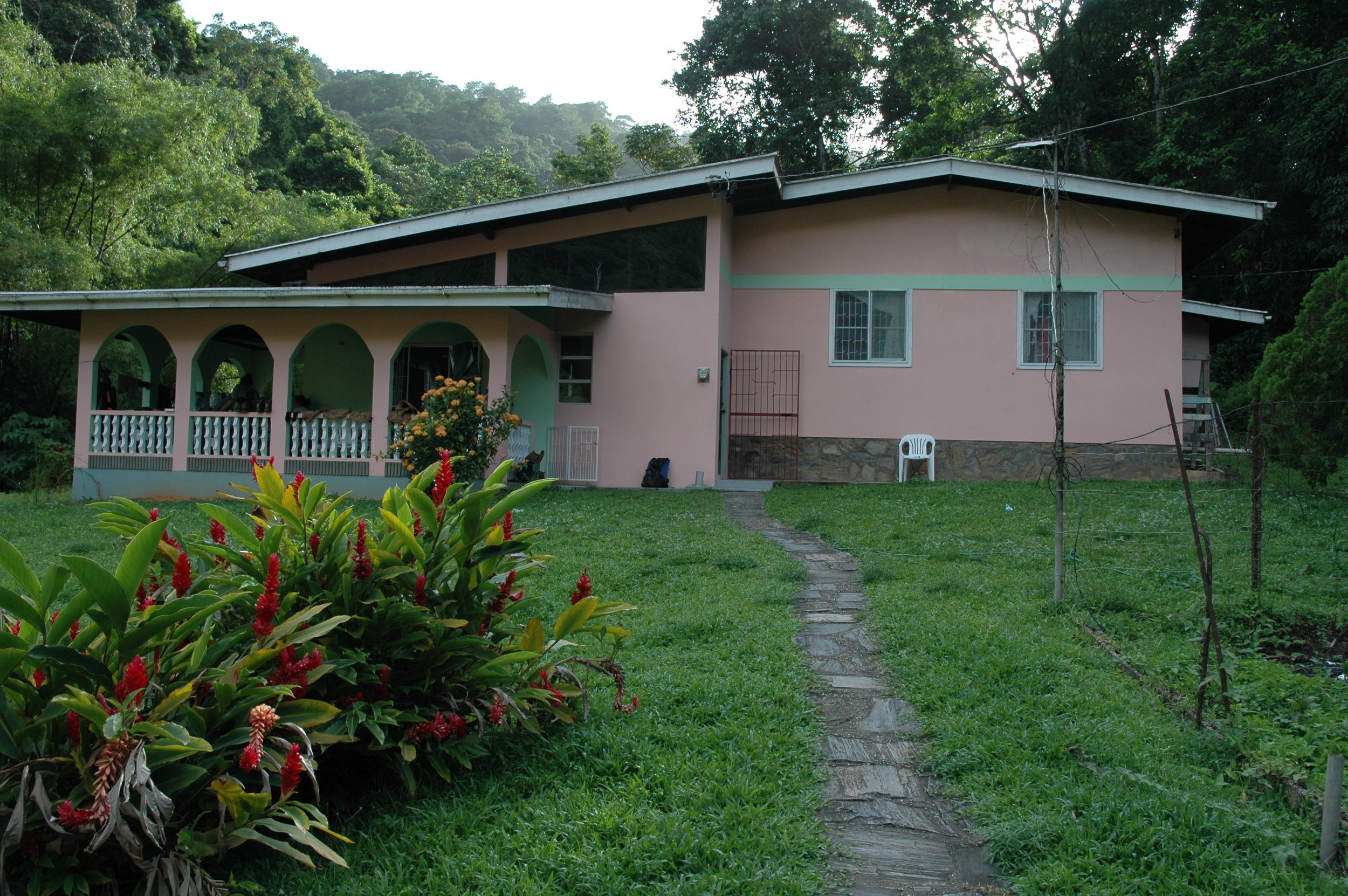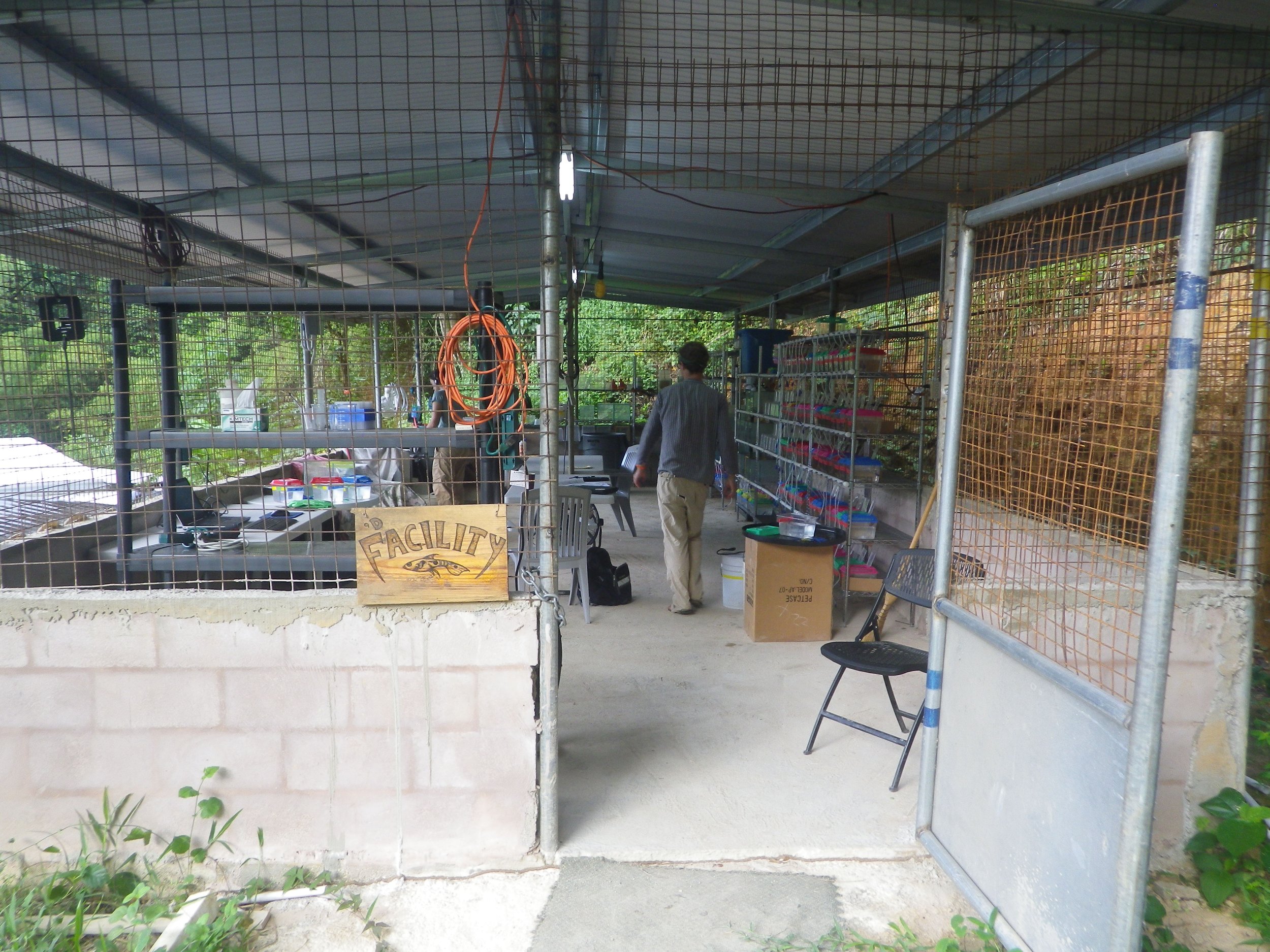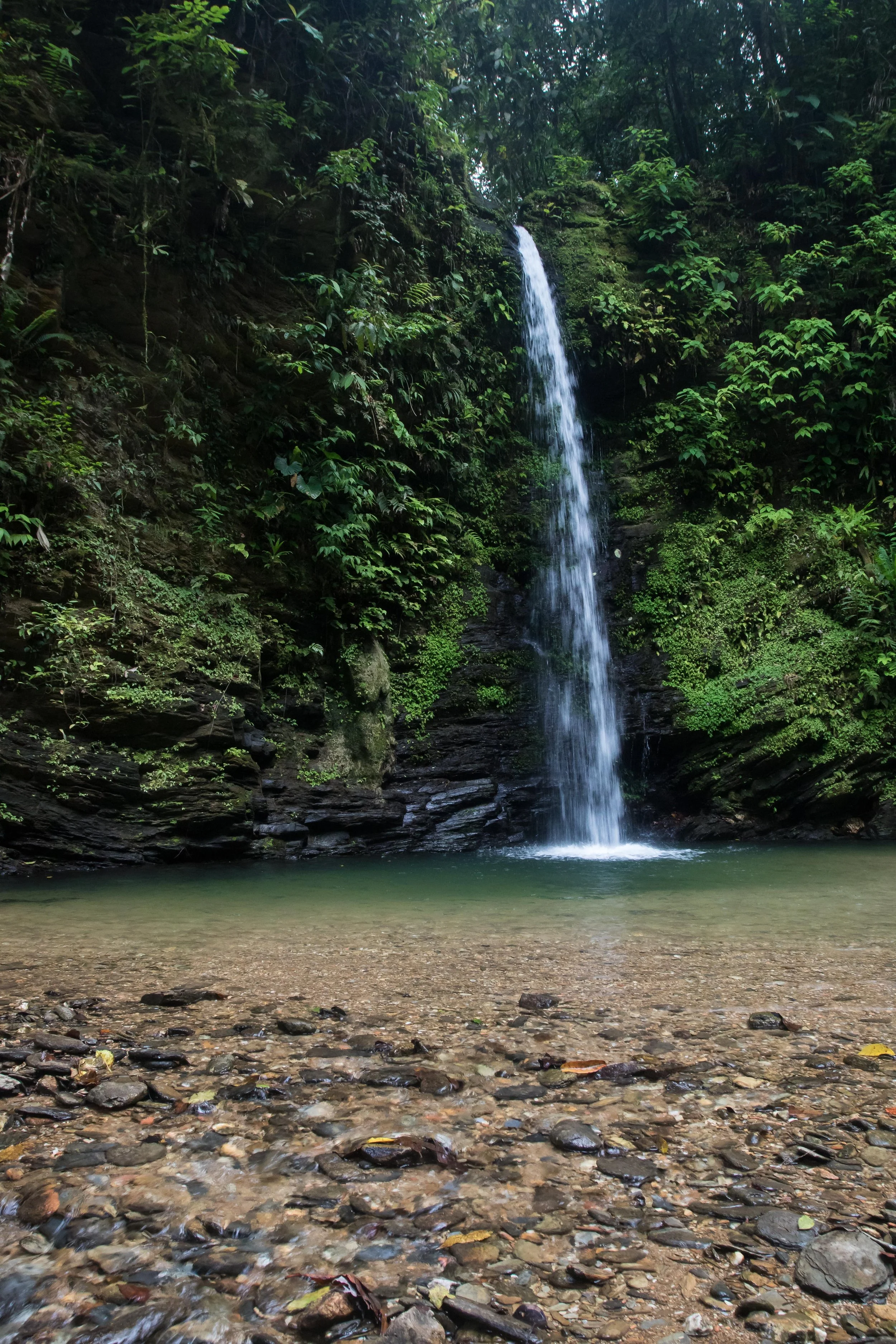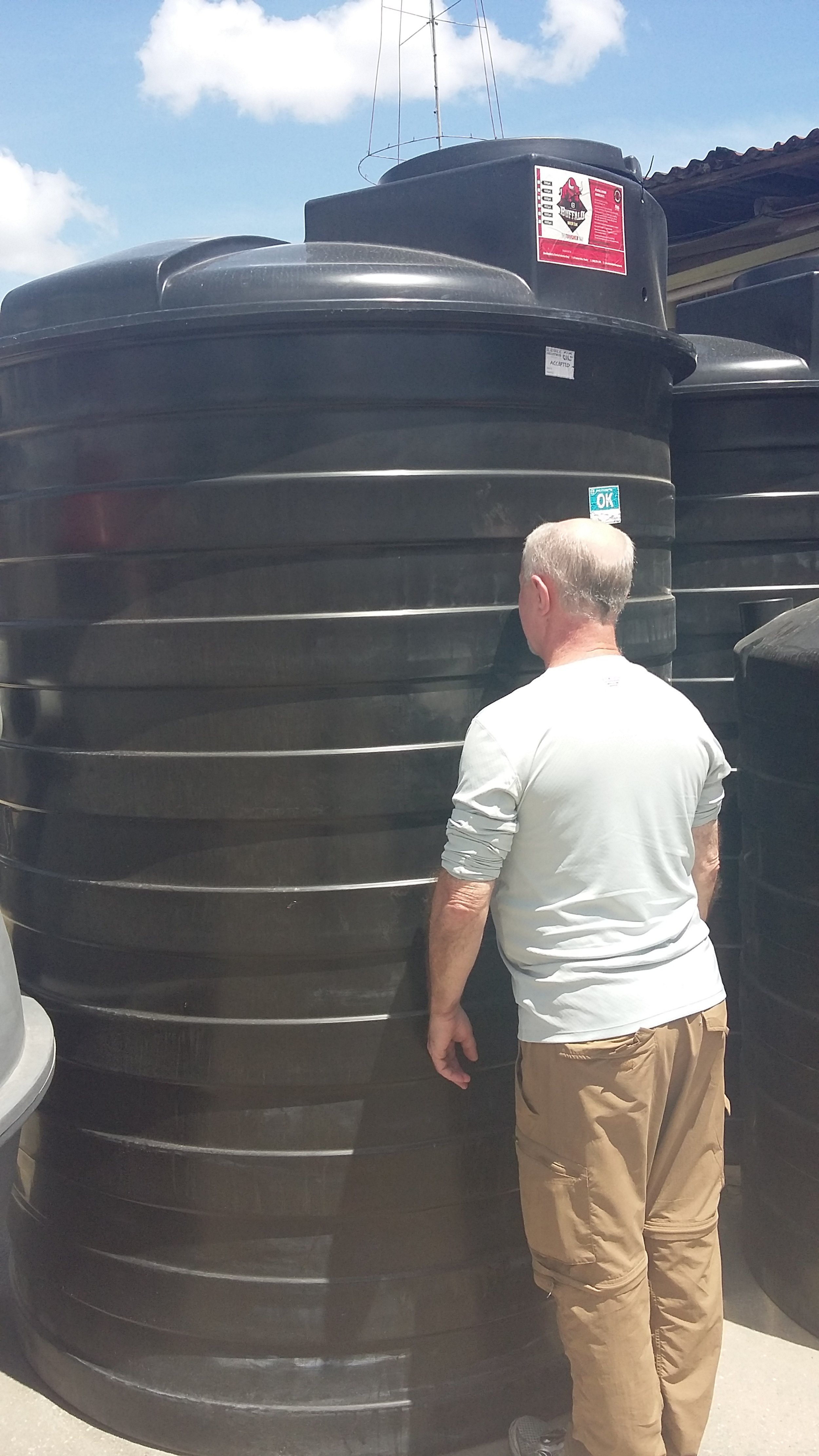Trinidadian Streams
A barrier waterfall. Photo courtesy of Joshua Goldberg.
Male and female guppies. Photo courtesy of Paul Bentzen.
Much of the empirical research in the lab comes from a species that has been used extensively to address questions in evolutionary ecology, the Trinidadian guppy (Poecilia reticulata). Guppies inhabit streams and rivers throughout the Caribbean island of Trinidad and occur along gradients of predation intensity. These gradients occur along the southern and northern slopes of the Northern Range Mountains. The Northern Range Mountains of Trinidad offers a natural laboratory for studying interactions between ecology and evolution. The rivers draining these mountains are punctuated by waterfalls that create distinct fish communities above and below the waterfall barriers. Species diversity decreases upstream as waterfalls block the upstream dispersal of some fish species. The succession of communities is repeated in many, parallel drainages, providing us with natural replicates of the evolutionary process.
An adult pike cichlid. Photo courtesy of Paul Bentzen.
Downstream guppies co-occur with a diversity of predators, which prey on the adult fish (high predation, or HP). Waterfalls often exclude these predators, but not guppies. Above the waterfalls, guppies experience greatly reduced risk of predation and increased life expectancy. In these low predation (LP) stream reaches guppies live with Hart's killifish (Rivulus hartii), which rarely preys on guppies and tends to focus on the small, immature size classes. Furthest upstream killifish is the only fish species present as they can survive in small pools of water and are even capable of overland travel on rainy nights (killifish only, or KO localities). Population genetic analyses reveal that at least some of these rivers represent independent replicates of the evolution of guppies adapted to HP and LP environments and that LP and HP populations are more genetically distinct than expected under migration-drift equilibrium.
Guppies adapted to HP environments mature at an earlier age, devote more resources to reproduction, produce more offspring per brood and produce significantly smaller offspring than LP guppies. These differences are consistent with across multiple streams where the LP strategy has evolved independently. They are also consistent with predictions from theory that predicts how increased mortality should drive changes in the life history.
Mark-recapture studies on natural populations support the role of predators in shaping guppy evolution, but at the same time suggest that resource availability is important. HP guppies experience substantially higher mortality rates than LP guppies, which suggests that predator-induced mortality is a candidate cause for the evolution of the HP phenotype. However, guppy populations in low predation sites tend to have higher population densities, slower individual growth rates and size distributions shifted towards larger fish. These differences in population structure are attributable in part to demography: HP guppies have higher birth and death rates. They are also attributable to evolved differences in life histories: LP guppies mature at a later age and have lower birth rates. Thus, removal of predators causes not only changes in the age-specific probabilities of death, but also leads to increased population sizes and lower resource availability in LP locations.
So in sum, guppies living without predators have a substantially reduced risk of predation and higher population sizes compared to their counterparts that live with predators. How then does this dual effect of predators (mortality risk and population size) shape the life history? How much of the life history differences do we see are a direct consequence of the change in mortality risk vs changes in the availability of resources to the surviving guppies? Answering this question was one of my original goals and is a foundational goal of The Guppy Project which began in 2007. More information about the Guppy Project can be found here. Since then we have expanded our research to include additional questions about how guppies shape the stream communities and evolve to coexist with killifish in low predation environments.
One of the really neat aspects of guppies that sets them apart from other organisms is that we can study them in natural habitats using comparative analyses or experimental approaches, in artificial streams, and in the laboratory. They also have relatively short generation time (~5 months) which allows us to conduct experimental evolution studies over reasonable time frames. There are few other organisms that can be studied across these three levels of realism.
As part of the NSF sponsored research in Trinidad, my colleagues and I operate a small research station in the Arima valley of Trinidad. We rent two large houses and two lab spaces where we can house fish as part of the long-term mark recapture of guppies and killifish. In 2019, we also built a new mesocosm facility at the site with 16 independent artificial streams for experiments.
Construction of new mesocosm facility completed in January 2022.
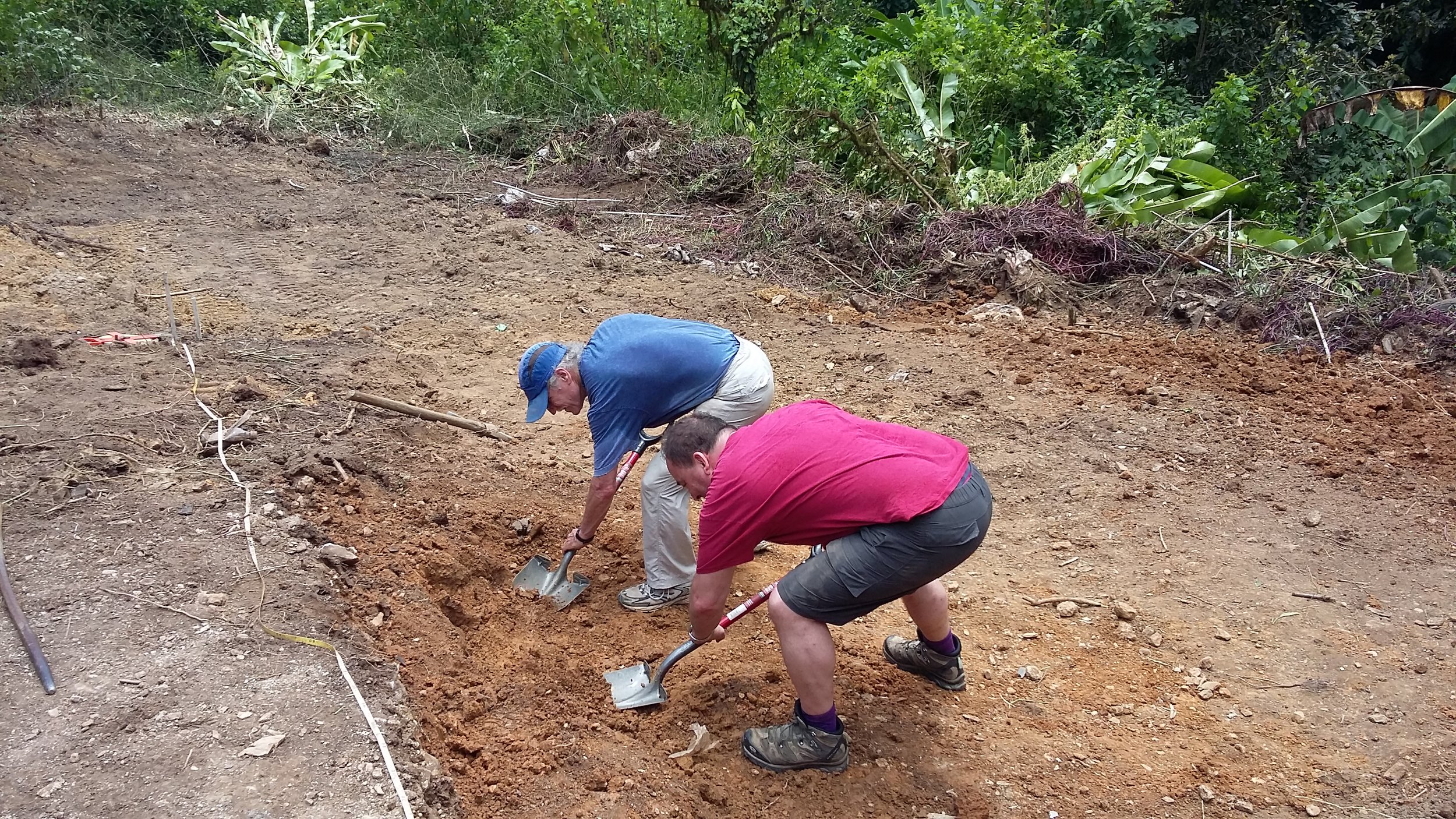
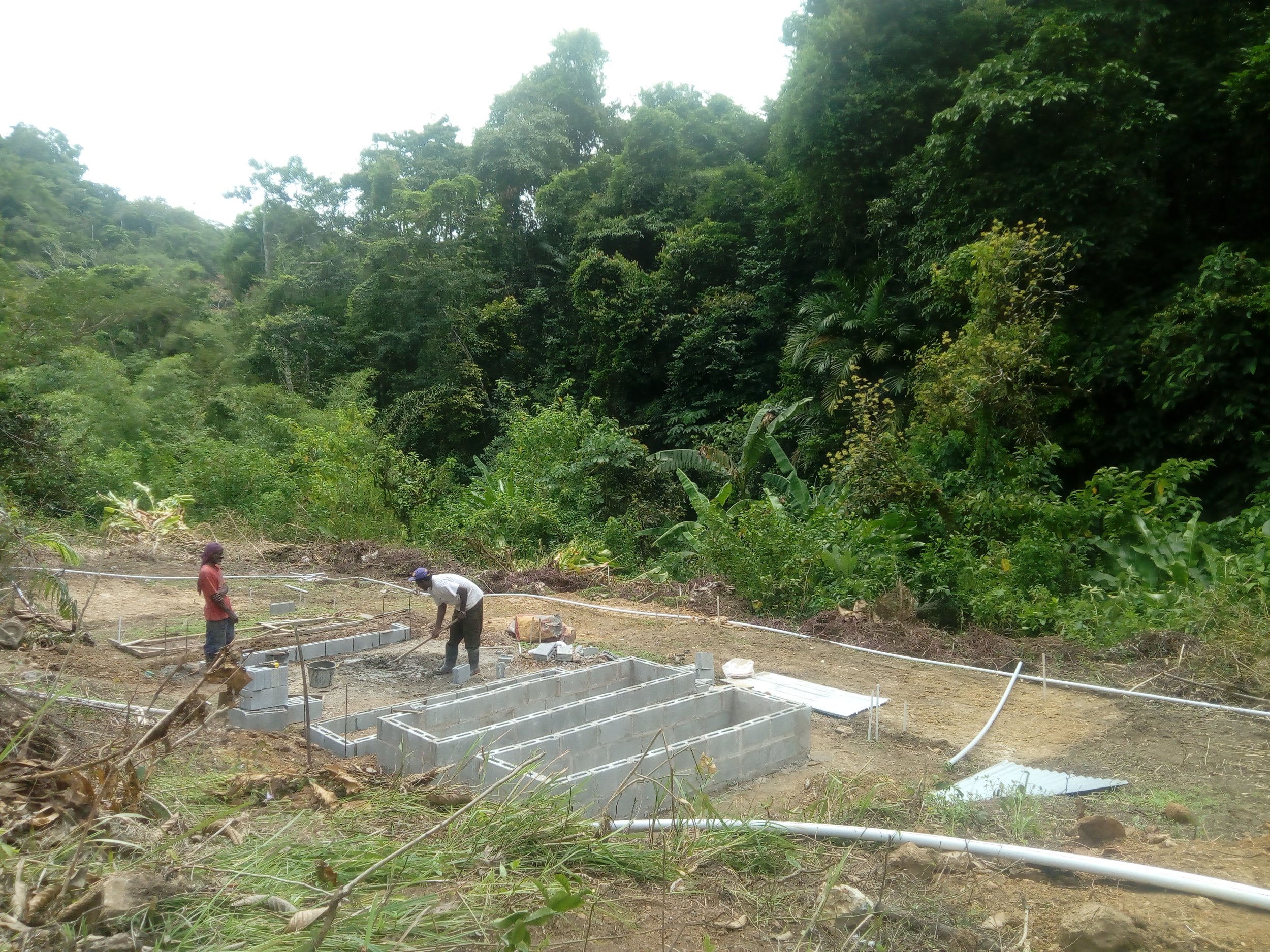
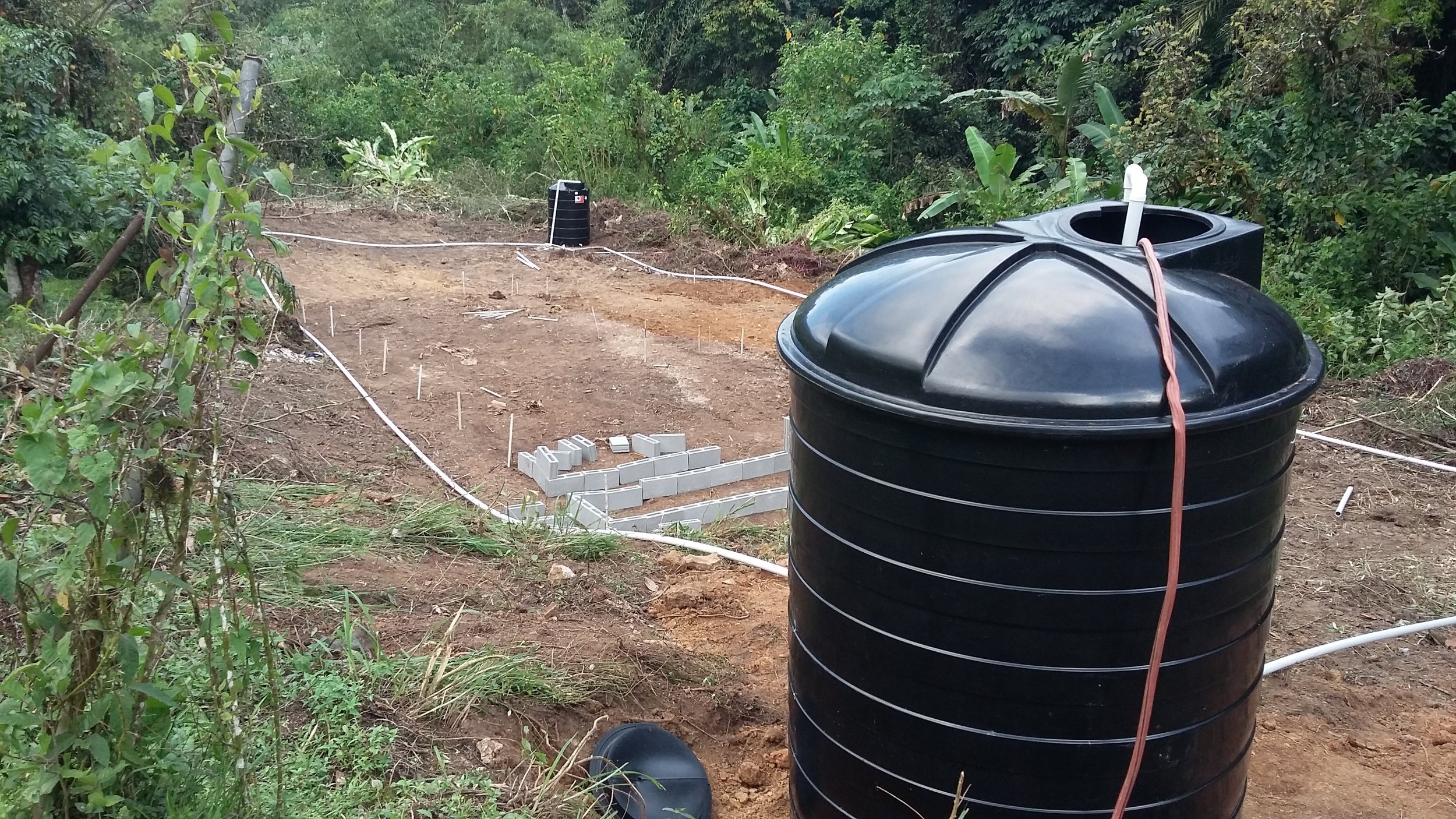



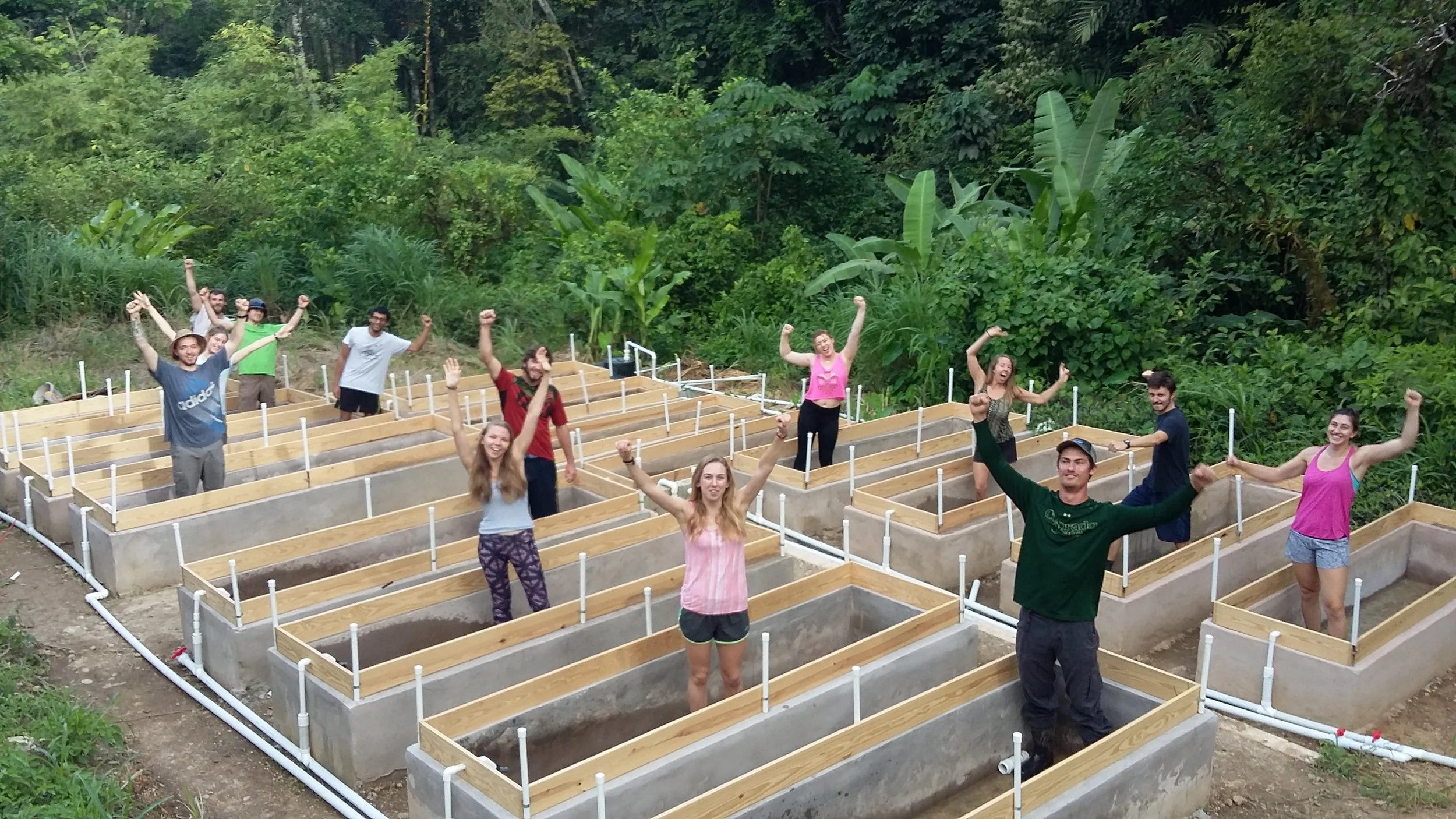
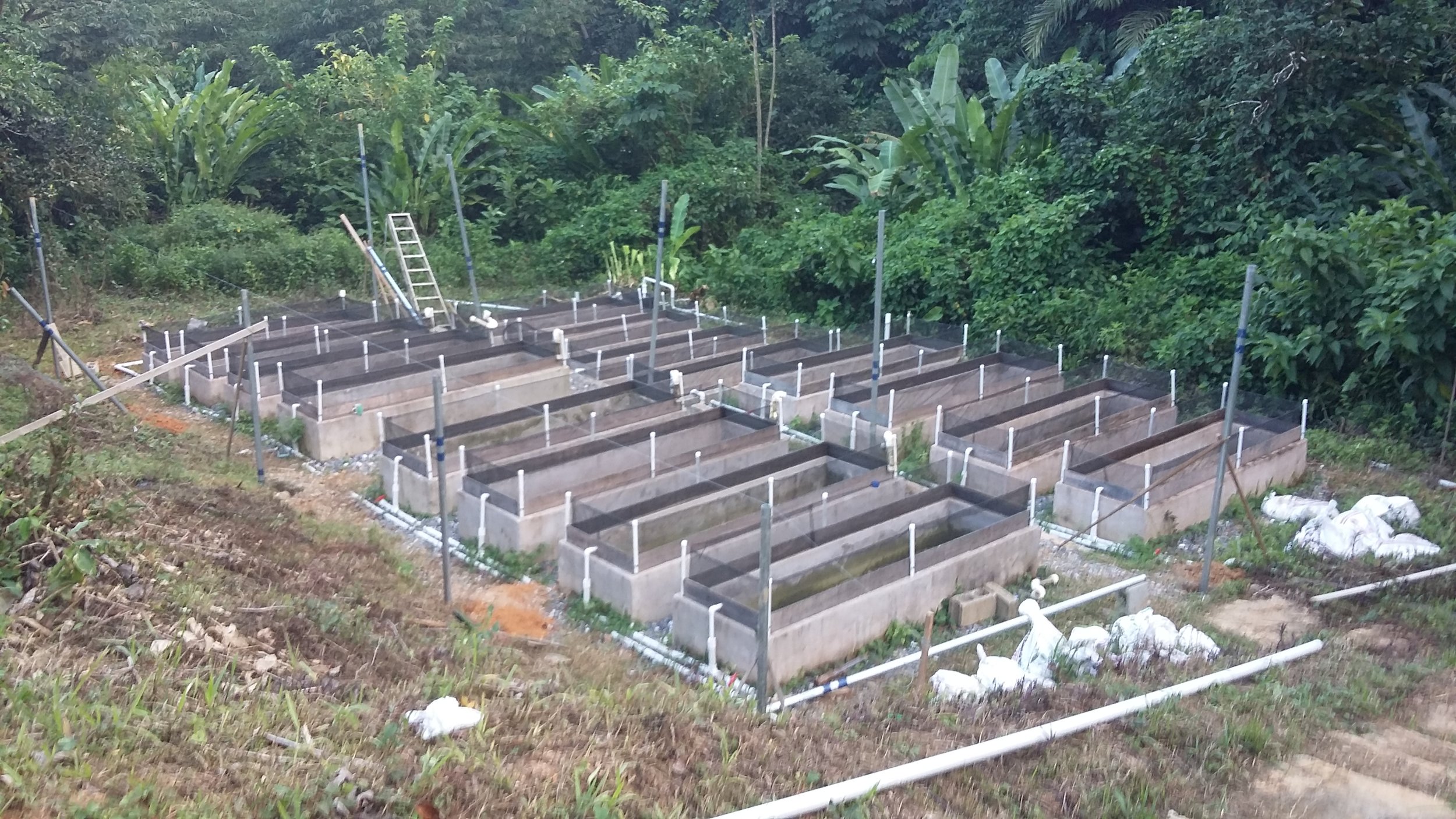
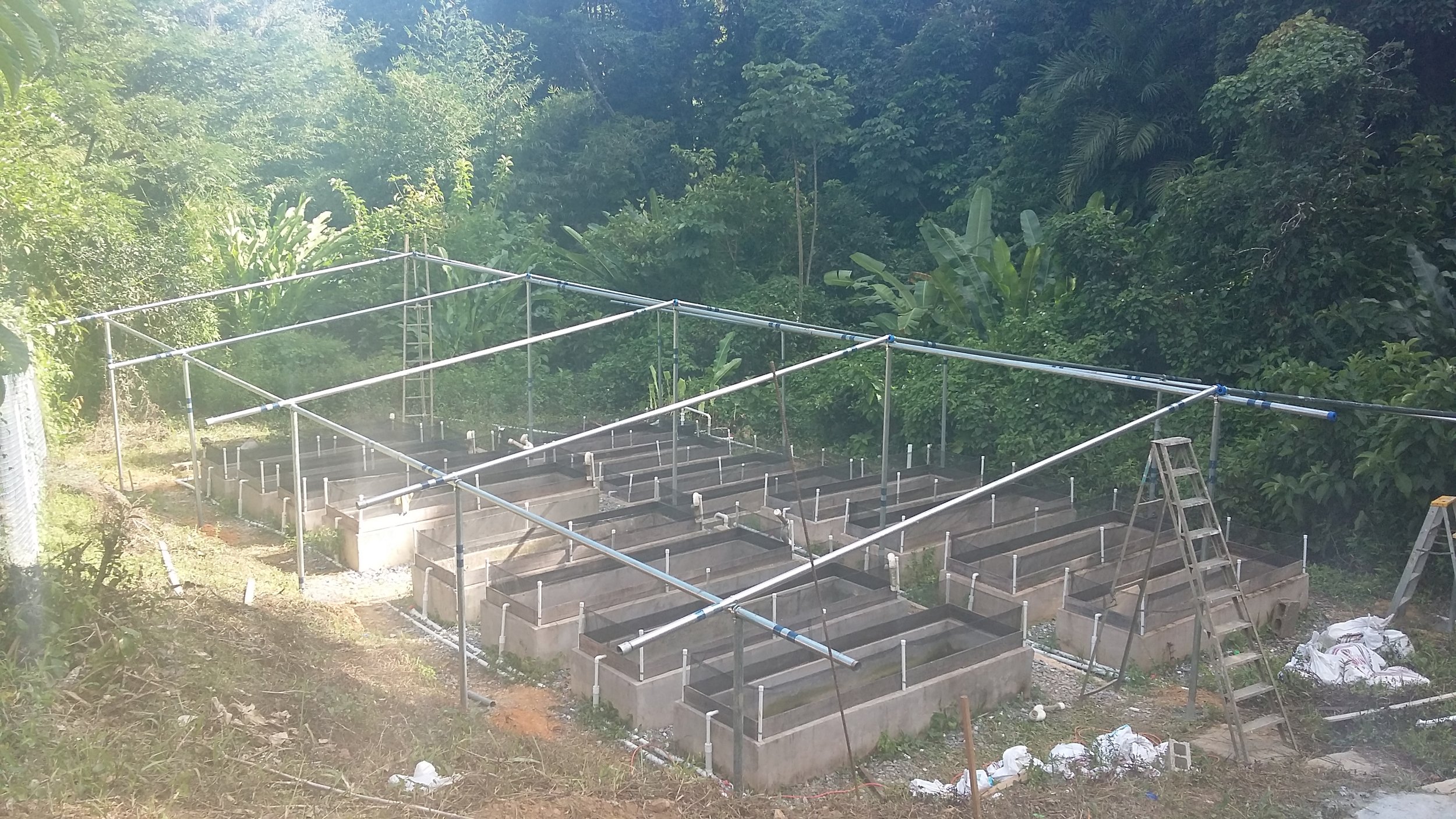
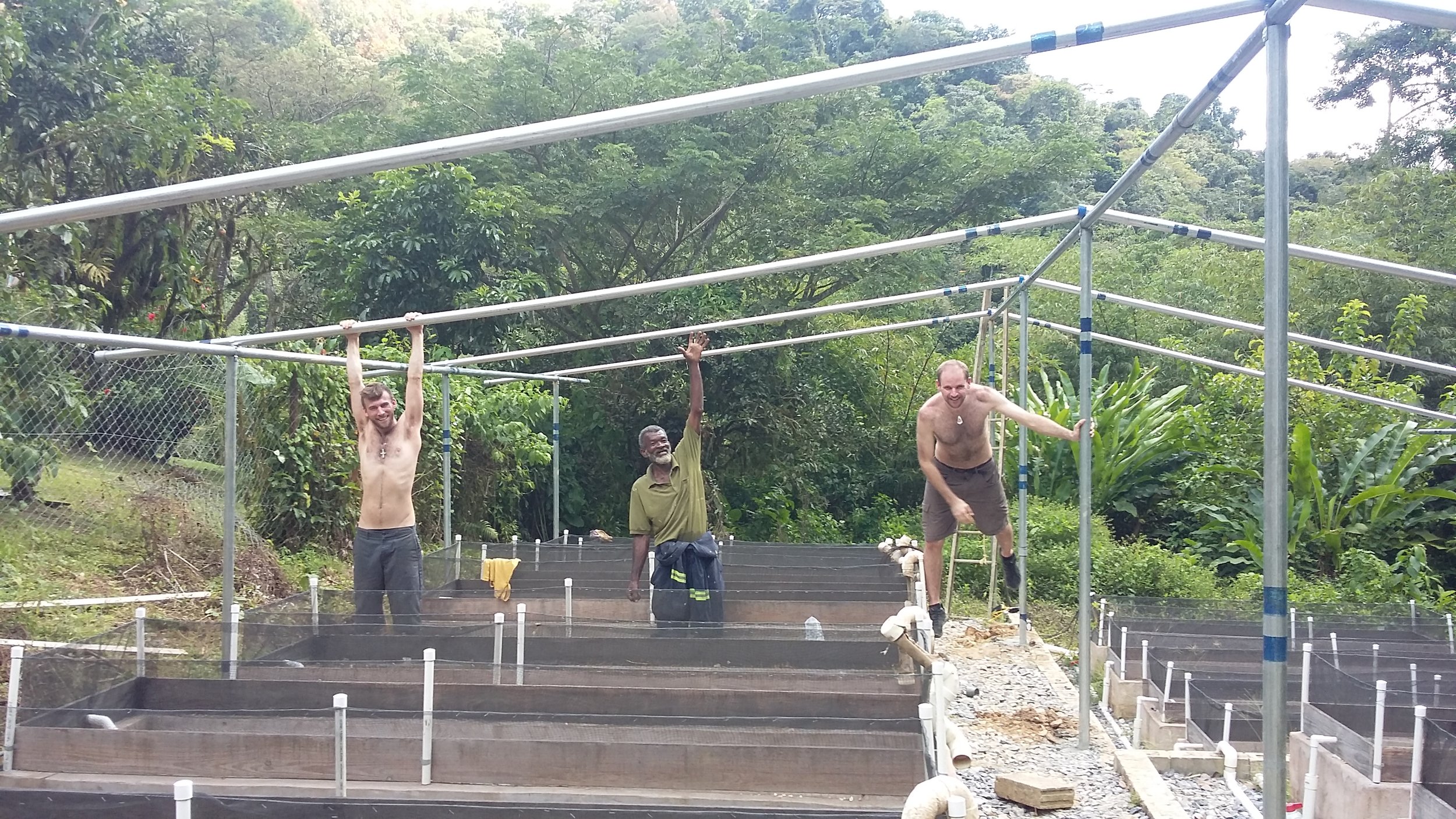
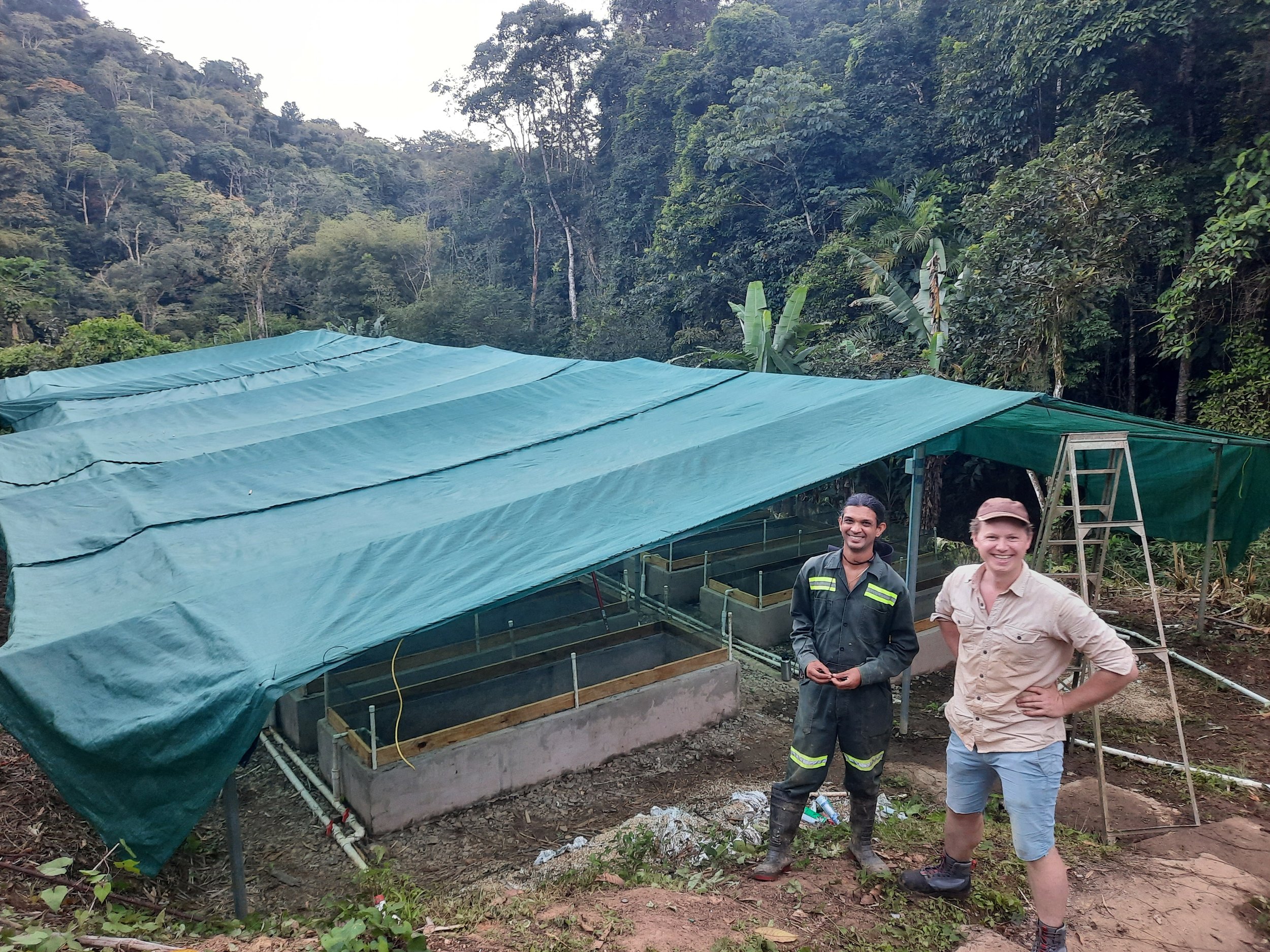
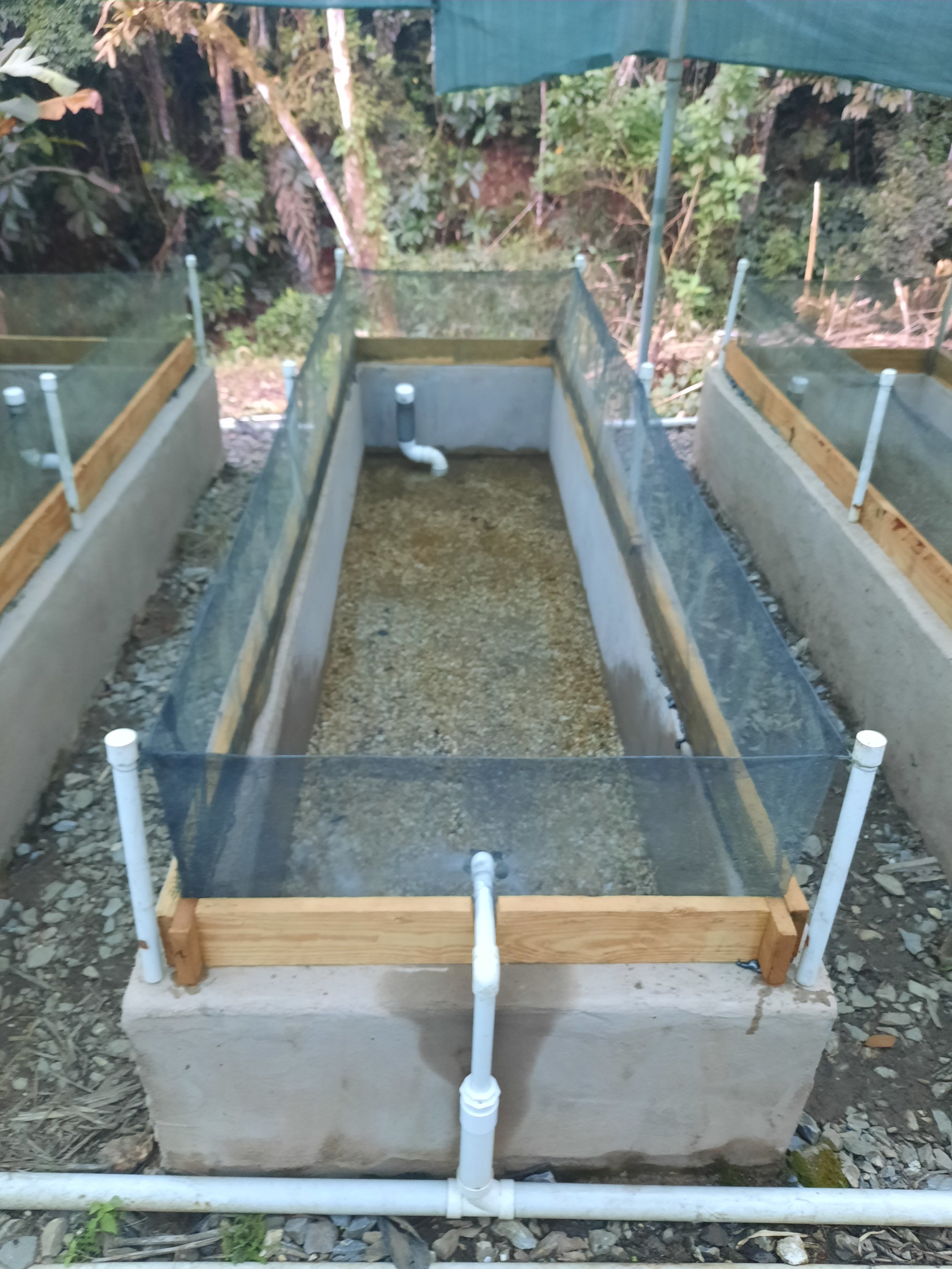
Housing and lab space at the field station
